
All categories
Featured selections
Trade Assurance
Buyer Central
Help Center
Get the app
Become a supplier

(5227 products available)





















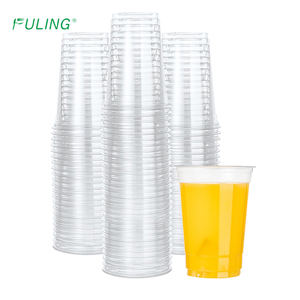
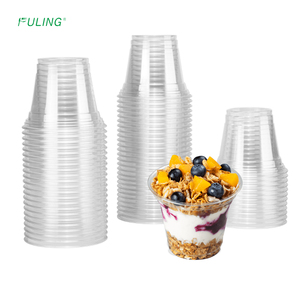



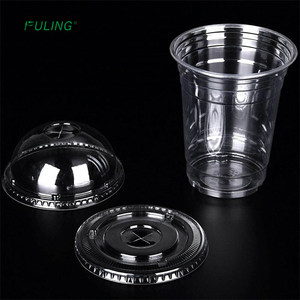









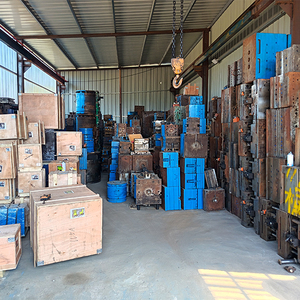
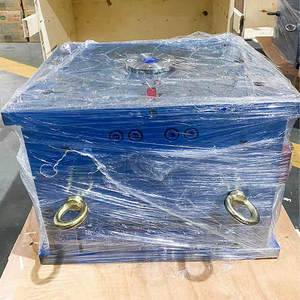





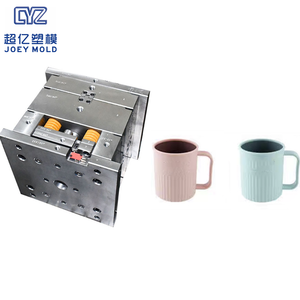
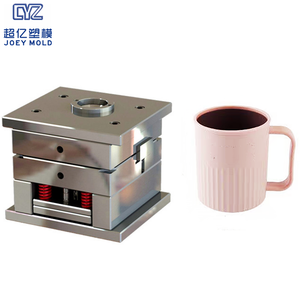


The injection molds for a plastic water cup come in various types. Each offers distinct features suited to specific design and manufacturing needs.
A single-cavity mold is designed to produce one plastic injection water cup per cycle. Manufacturers often use this type for simple, low-volume production. It focuses on rapid output without the complexity of multicavity molds.
As the name suggests, a multi-cavity mold produces several cups in a single injection cycle. This increases productivity and efficiency. It is ideal for high-volume production where uniformity is critical.
A family mold produces different but related parts in a single shot. For instance, a mold could create both a water cup and its lid. This reduces the cost per part and saves time in production.
A hot runner mold keeps the plastic in the runner system fluid by heating it. This minimizes waste and improves cycle times. It is often used in high-quality requirements where the end product needs to be visually appealing.
Hot runner systems cool off the plastic in the runner system. This is unlike the hot runner molds. It is simpler and cheaper, but it increases waste. It can be suitable for low-cost applications where the environment is harsh.
Stack molds feature two or more molding plates that double the number of parts produced in a single cycle. It saves floor space. These are ideal for producing higher quantities of parts quickly.
Manufacturers integrate labeling into the mold itself with IML molds. It allows for high-quality, durable labels in a single molding process. This enhances the aesthetic appeal of the plastic water cups. It also increases the mug’s durability.
A bimaterial mold injects two different types of plastics into a single part. It allows for cups with varied textures, colors, and rigidity. It adds functional and visual advantages to the final product.
A preview mold is developed to create prototype parts before full-scale production. It helps manufacturers and designers to visualize the end product. This identifies potential design flaws early on.Industrial Applications of Plastic Injection Water Cup Mold
Water cup molds for plastic injection are widely used in the consumer product industry. There they create a variety of durable and attractive water bottles, mugs and cups.
The plastic water cup molds offer an essential role in the food and beverage industry. They are used to make insulated mugs, coated paper cups, and plastic mugs for both hot and cold drinks. The molds ensure that these cups meet necessary health and safety standards.
In the biomedical industry, plastic injection molds create disposable cups for sterilized water, which are needed during medical examinations. These cups are manufactured in production runs of thousand, allowing the medical centers to always have cups available.
In the manufacturing process, plastic injection water cup molds use a technique called injection molding. It involves heating up plastic pellets until they are melted and pouring the plastic into the molds. The molds can be made of different materials, such as steel and aluminum. The choice of steel will depend on the production run, the cost factor, and the temperature of the cups.
These are created out of lower-cost materials like epoxy. They are used for smaller production runs or as a test run, to produce around a thousand pieces. If the production demands goes up, then steel molds will be used, or if the test results are satisfactory.
The industrial injection molds can produce millions of cup plastics. They are designed to withstand high pressures and temperatures, along with being very durable. Industrial cup molds come in two types of runners, which are cold and hot runners. Hot runners are more efficient as they keep the plastic in the runners liquefied by heating it up.
The key features of the plastic injection water cup mold include:
Material
The injection water cup molds can be made from many kinds of materials. Alloys steel like P20 and H13 are used for standard production runs because of their durability. Aluminum is a cheaper choice, but it doesn't last as long. Electronic steel offers higher resistance to corrosion and will be used for production runs that require production molds to be resistant to the environment.
Gate Variations
There are several kinds of gates, which are the small openings through which the liquid plastic goes into the mold. They include pin valves that close to control the liquid plastic, valve gates that are opened and closed by a machine, edge gates that are placed on the edges, and open gates that are always open.
Runner Types
Cold runners are the easiest to make and cheapest in the injection molds for water cups. Hot runners are more complicated because they keep the liquid plastic warm, but they are better for the environment since they use less of the plastic.
Mold Cavity
Multi-cavity molds can produce many mugs at a time, from 2 to 64. There are also stack molds that are multi-cavity molds but with two or more molding plates that double the number of parts produced in a single cycle. Family molds make different but related parts in one shot to save time.
Before the injection process can begin, the following aspects in regard to installing the plastic injection water cup mold must be put in place:
Clamping the Mold
The other half of the injection water cup mold is placed on the injection machine. Then, a clamping force proportionate to the size of the mold and the injection machine's capability is applied.
Heating the Plastic
Plastic pellets are loaded into a barrel in the injection machine. The plastic is then heated till it reaches a molten state.
Injecting the Plastic
Once the plastic has melted, a screw or piston will drive the molten plastic into the closed mold under high pressure.
Cooling and Solidification
The injected liquid plastic will fill all areas of the mold to take the shape of the water cup. As it cools down, it will solidify into the plastic injection water cup.
Removing the Molded Cup
After sufficiently cooling, the mold will be open to release the molded water cup. In automated systems, mechanisms will push or eject the molded plastic ware out of the mold cavity.
Injection molds are used to produce many water cup plastics at a higher production efficiency. Below are common uses of the injection water cup molds:
Injection Molding
Water cup molds are used widely in the injection molding process so that an array of water cups can be produced in mass. The molds provide the right shape and design for the cup. Extrusion Blow Molding
Some plastic cups may be manufactured using other molding methods like extrusion blow molding, which combine several molding methods to produce more intricate designs.
Customization
These molds are widely used to create custom water cups that have brand logos or cute designs. Various changes can be made to the molds to come up with different sizes, colors, and designs of water cups depending on the market demand.
The plastic injection water cup mold must be of high quality to produce high-quality plastic injection water cup. The factors affecting the quality of the molds include:
Material Selection
Manufacturers usually make water cup injection molds from steel like H13, P20, or bimetallic steel. Steel molds work effectively when the environment is harsh because steel is resistant to corrosion. Steel molds have a high wear resistance, which means they can be used for a longer period of time. This offers manufacturers a higher production quality. For short runs, aluminum or temporary molds can be used.
Manufacturing Process
Injection molding consists of melting plastic and pouring it into a mold. The extreme heat and pressure during the injection process can warp or damage a low-quality mold. High-quality molds minimize defects like scars and color variations on the cup.
Design Precision
With mold cavitation,all the mold features must be accurate within very tight tolerances. Any irregularity can be manifested in the end water cup injected plastic results. Poor mold design can also result in uneven cup walls that affect the strength and aesthetic value of the water cup. Quality control measures will be in place to check for such defects like warping or swelling.
Proper maintenance on the injection mold for plastic cups or the molds ensures that the produced water cups remain durable and of high quality. Below are maintenance practices:
Cleaning
The mold should be cleaned to eliminate residual plastic, dust, or any other contaminants that have accumulated on the surface. This will ensure there are no defects on the cups. The mold should be cleaned using solvent or nitric acid. Do not use any other cleaning method that may injure the mold.
Lubrication
Regular lubrication of mold parts integrating in the mold will prevent friction. This makes the wear and tear of the molded cup mold parts to be lesser. Lesser wear and tear means there will be longer life and better maintained quality on the mold.
Inspection
There should be periodic inspection of the plastic water cup injection mold. Inconsistencies, like small pits or cracks on the surface, can affect the quality of the end product. Inspecting the mold helps identify these issues early on and address them before they worsen.
Storage
When not in use, the injection water cup molds should be in a dry and cool area so that they will not be damaged by extreme heat or oxidation. Cover the molds with rust-inhibiting oil to prevent oxidation when storing them for long periods.
One can use the following strategies when sourcing for plastic injection water cup molds:
Supplier Research
Water cup injection mold suppliers can be found by doing online research and referrals. One should look for suppliers who deal exclusively in high-quality plastic injection molds. Consideration of the supplier's material offer, production capacity, and experience will help in determining whether they are ideal or not. A good supplier, like one found at Alibaba, should be able to provide prototypes first and be open about their prices and making special orders.
Communication
There should be clear communication between the buyer and the supplier. Buyers should tell the suppliers about their needs in regard to the design, materials, and quantity. Buyers should also ask the supplier about the mold's quality, delivery time, and how to maintain it. This can avoid manufacturing defects or misinterpretations. Buyers should also have a good understanding of the mold costs and the shipping costs so as to not be surprised later when water cup molds are delivered.
Quality Control
At the production stage, quality control should be done to mold defects like air bubbles or poor engraving on the mold. Buyers should also run tests on the molded cups for quality and functionality. It is also important for buyers to start building a long-term relationship with their suppliers based on trust and cooperation. Satisfactory and open business relations can lead to better deals in the future.
A plastic injection mold made of steel can produce up to a million plastic cup mugs. An aluminum mold will produce around 50,000 cup plastics. Various factors, such as the manufacturing materials used, the environment, and the maintenance of the injection mold, will determine the lifespan of the mold.
Manufacturers widely use steel like H13 and P20. Newly discovered materials like composite materials are also increasingly being used because of how cost effective they are.
Both have their pros and cons. Metal injection molds are ideal when large quantities need to be produced. They are very durable. For smaller quantities, a plastic mold will do just fine as it is cheaper and still provides good quality.